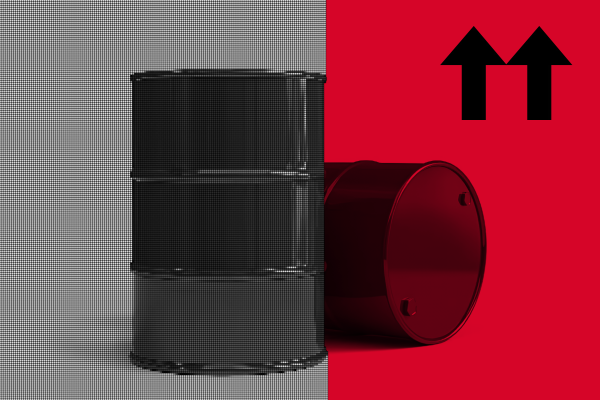Trading Signals 05/02 – 09/02
Oil Prices: How Long Will the Growth Last?

In July, the September futures for Brent crude oil rose by 14.2% to $85.56 per barrel, reaching the highest level since May 2022. At the same time, WTI futures for September delivery surged by 15.8% to $81.8 per barrel, the highest for this type of oil since January 2022, according to data from the New York Mercantile Exchange. The increase in oil prices was triggered by a reduction in its production by several countries. However, there are other factors contributing to the support of the oil rally.
Factors Affecting Oil Prices
1. US Federal Reserve Policy and Recession Threat
One of the crucial factors is the US Federal Reserve’s policy on interest rates. The base rate has been substantially increased to 5.50% in a belated fight against inflation. Despite some indicators of slowing price growth, there is still a risk of a global economic slowdown.
With the Fed’s inclination to continue raising rates, the US economy is likely to enter a technical recession starting from the third quarter of 2023, though the downturn is expected to be moderate. This could restrain the rise in oil prices, as the US is one of the leading consumers of fuel.
To reduce fuel costs in the domestic market, America has already released a significant amount of oil barrels from its strategic reserves, which it plans to replenish when the price of black gold falls to $67 – $72. However, all efforts to stabilize the price growth on the global market remain unsuccessful. Some analysts suggest that the US will make every effort to lower oil prices in order to replenish strategic reserves.
Meanwhile, a recent attempt by the Biden administration to engage in dialogue with OPEC+ leader Saudi Arabia regarding increasing oil production has proved unsuccessful. Old grievances over Biden’s sharp criticisms of the Saudi leadership resurfaced. Additionally, high oil prices are currently beneficial for all major producers, including Saudi Arabia.
2. China’s Economic Recovery
Global prices also depend on the pace of economic growth in China and other Asian countries.
On August 1st, Chinese authorities promised to strengthen financial support for the private sector to stimulate economic growth. The post-COVID recovery wave has ended, and the dynamics are no longer inspiring, so authorities are trying to support the economy.
As China is the world’s second-largest fuel consumer, the prospect of financial stimuli and increased business activity is a positive factor for oil prices.
3. Reduction of Oil Production in Russia and Sanctions-Related Discounts
The decrease in oil production in Russia and the increased demand from China should lead to higher global oil prices. However, the sale of Russian oil at a discount of about 30% and the reduction in industrial production in the EU and the US will prevent oil prices from reaching their maximum levels.
Experts forecast that by 2030, oil production in Russia may decline by 20% if local companies, which rely on Western oil services and imported equipment, do not develop their own services.
4. OPEC+ Production Decline
In July, OPEC+ production experienced the fastest decline in several years. According to Bloomberg’s research, the alliance’s production decreased by 900,000 barrels per day, reaching 27.79 million barrels per day. This is the sharpest decline since 2020.
The primary reduction in production came from Saudi Arabia’s voluntary cuts, reducing production by 860,000 barrels per day. It is expected that Riyadh will extend the voluntary production cut of 1 million barrels per day in September. Nigeria and Libya also made smaller cuts in their production. It is anticipated that OPEC+ production will not increase in August.
Oil prices concluded July on a high note, as demand prospects remain impressive, and there is no doubt that OPEC+ will maintain market tightness.
Forecast
Supply reductions and record oil demand support high commodity prices, and analysts expect this trend to continue in the near future. According to Goldman Sachs’ estimates, global oil demand reached a record 102.8 million barrels per day in July. The forecast for 2023 was increased by 550,000 barrels per day, thanks to higher economic growth expectations in India and the US, offsetting the lower consumption forecast in China.
Recently, oil prices have been supported by expectations that Saudi Arabia will extend its voluntary production cut into September, leading to limited supply in the world. Based on a survey of commodity analysts from major asset management companies, the price range for oil in the fourth quarter of 2023 may be $85 – $90.
Technical Analysis
*Brent Oil (Daily)
On the daily chart, it can be seen that Brent crude oil has found strong support around $73 in the first half of 2023 and rebounded to reach $85.83. Ahead, it faces a significant resistance level around $87.24, which has repeatedly pushed the price down in the past. Currently, there are no clear obstacles to reaching this level. Everything will depend on the economic data from the USA and China, as well as the outcomes of the OPEC+ meetings.
Oil: A Review of Early 2024
China’s Economy: Early 2024
Simple Strategy for Beginner Traders

